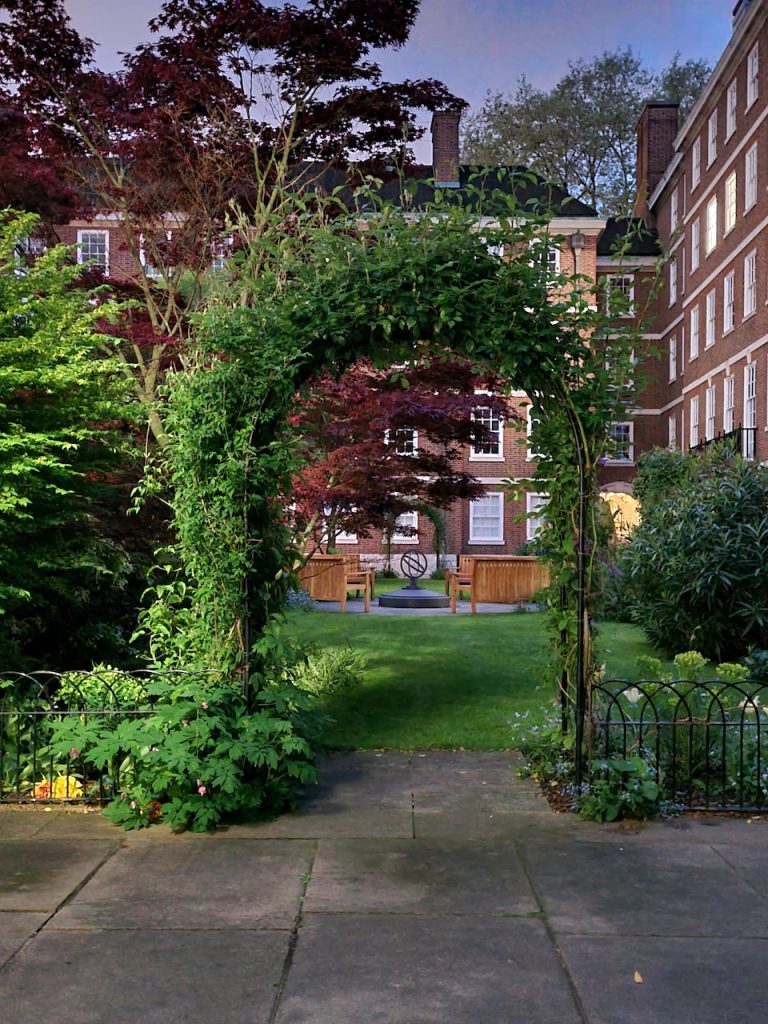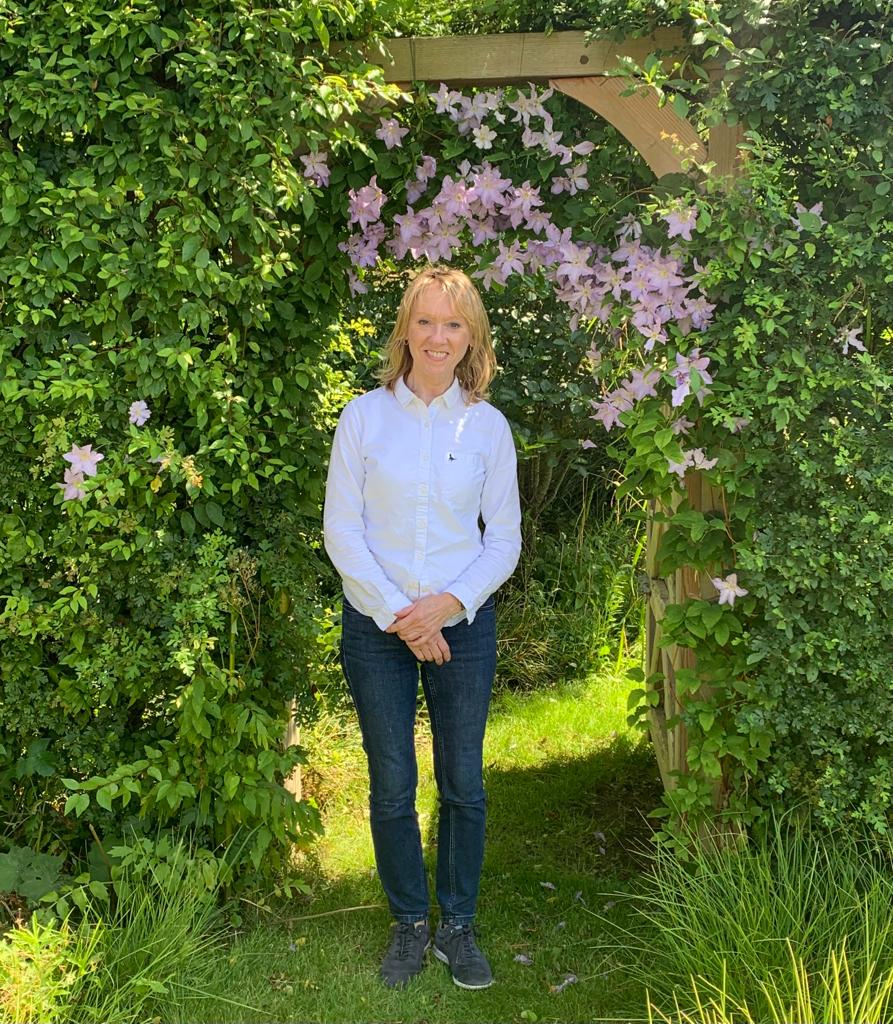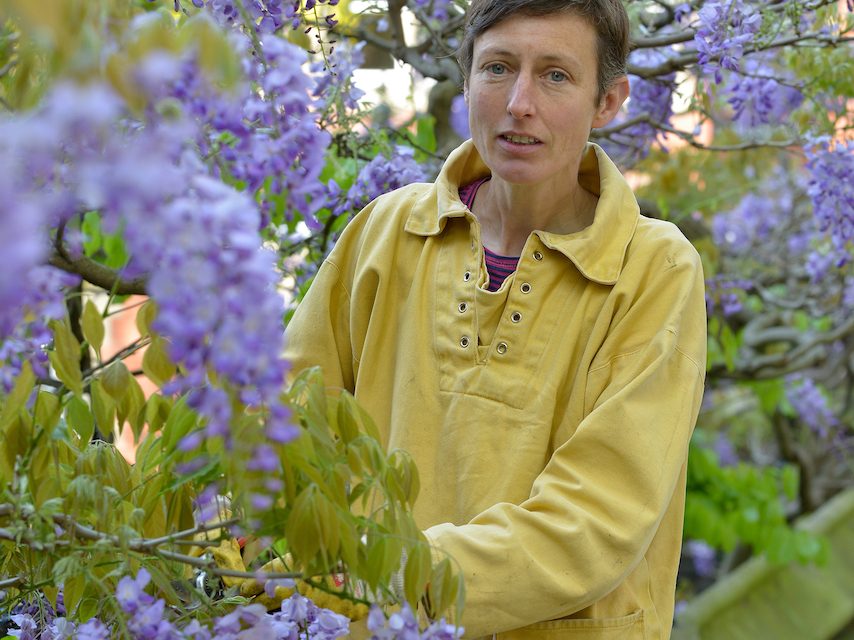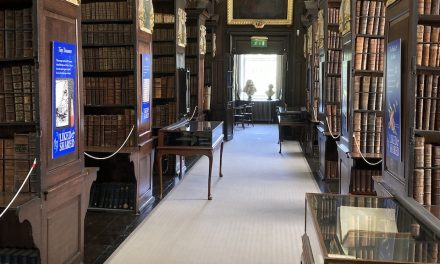Oh, the joy, to have acquired (effective Sunday 1 January 2023) what must be the dream role for a gardening-mad Bencher of Middle Temple, that of Master of the Garden.
It is still very early days, but it has already brought me the pleasure of walks round her ‘estate’ with Head Gardener, Kate Jenrick, finding myself unable to resist picking her brain on plants and on training techniques, such as how to achieve the precise angle of lean on the rose stem, in order to comply with the (strictly, non-legal) doctrine of apical dominance.
Kate has been Head Gardener since (as long ago as) 2008. I have been amazed to discover that her path to this life was via a career at the Bar, having been in practice for 10 years, latterly as a member of Arden Chambers. The roots of her interest in gardening go back to early childhood, growing up in a large garden in Surrey, feeling the mud between her toes as she ran around Mr Moon (ostensibly the gardener, whereas the real burden of the large garden was borne by her mother). Kate laid down memories of the scents of Spring – the lilac and the blossom of the fruit trees in the orchard. It was a visit to Chelsea Physic Garden, with her mother, that eventually sparked a real interest in gardening as a career.
Initially, Kate combined practice at the Bar with entry level RHS evening classes, followed by one day a week away from chambers for a practical NVQ programme. After gaining hands-on experience through volunteering as well as assisting in some of the classiest of London Squares (Thurloe, Markham and Kensington), Kate set out to gain the gold standard of qualifications, Dip Hort (Kew), the culmination of three years’ study at Kew Gardens. Kate trained at Kew with another gardener well known to the Temple, Andrea Brunsendorf, who went on to become the first woman Head Gardener at Inner Temple. It was Andrea who alerted Kate, then working at Painshill Park in Surrey, to a part-time vacancy in Middle Temple, which led on to her full-time appointment as our Head Gardener.
For Kate, the courtyards of the Middle Temple are the corners of her domain most special to her: Elm Court, abundant in early summer with clematis, honeysuckle, euphorbia and forget-me-not set amongst vividly contrasting purple Japanese acers; Fountain Court with its splashy-cool sun/shade planting, including camellias and once fashionable medlars; the (almost) secret nameless courtyard past Goldsmith’s Building, enclosed by Temple Church, the Master’s Garden and Falcon Chambers, where herbs, vegetables and cordons of apple and pear are cultivated in raised beds; and Kate’s new wildflower garden, naturalising gently under the cornus tree outside Blackstone Chambers, where the soil was left (suitably for wildflowers) ‘lean and mean’ after the recent building works.
For planting inspiration, Kate looks to the dynamic duo of Christopher Lloyd and Beth Chatto (both sadly departed), whom she sees as having been ahead of their time and whose correspondence and gardens are the legacies of their great plantsman skills, as well as very different gardening styles. They are said to have become friends over a disagreement over bergenias (where I stand firmly on Lloyd’s side).

Not being a great fan of the uber-trendy Pete Oudolf style of perennials planting, one of two other gardens where the planting has been inspirational for Kate is Bryan’s Ground in Herefordshire, most photographed for its iconic mass planting of Siberian iris. Once the home of Hortus, the international garden journal, it is now closed to the public since its sale in 2021. The other is Buscot Park, a beautifully landscaped National Trust property, with vistas across the Cotswolds and some delightful tongue-in-cheek touches.
Kate counts amongst her own plant favourites: snake-head fritillaries (newly naturalising in Kate’s wildflower corner), the tiny iris reticulata and, at the other – more garish – extreme, lupins. For good gardening reasons, Kate would not wish to be without hydrangea macrophylla for its ability to alert her to the soil in the borders becoming too dry. Whereas some other plants will wilt and die before you can save the situation, the hydrangea will helpfully signal the presence of drought with an early wilt from which it will happily recover upon watering.
Her favourite time of year is October to April, when everything slows down and she can take time to plan, move plants around and prune, in contrast to the daily firefighting during the vigorous growing season.
Kate’s approach to gardening has shifted with the times, such as, now: servicing and monitoring the bees in hives concealed on the roof of Essex Court; encouraging and monitoring the resident bird population (including the occasional visiting Kestrel); leaving as much as possible of the cut down debris to lie on the soil where it falls, trapping moisture and encouraging wildlife; and adopting a ‘no dig’ policy in the borders.
At home, Kate lives beside a railway line with a secret garden running behind four Victorian villas. There she embraces the ubiquitous wild buddleia, blackberries, and sycamore. Planted in pride of place, so not adventitious, she has quince and a bullace for keeping herself well-stocked in gin. Cheers, Kate.
I wanted to conclude with an easily described gardening tip from Kate – apical dominance requiring a practical demonstration not feasible here. Somehow, we got onto the subject of daffodils and the slog of the September planting season. For some of us, mass bulb-planting is a chore too far: digging a hundred or more holes at least twice the height of the bulb in stony soil. It seems that, if you are desperate, you can just chuck the bulbs onto the top of the soil, and they will nestle their way in and right themselves. This, says Kate, is how some of the abundant roadside banks of narcissus in Cornwall came about. This may not be so successful with tulips, she says, as the squirrels may get to the bulbs first. I will try this and report back next year on my lazily ‘chucked about’ narcissus bulbs.

Master Adrienne Page was elected a Bencher of Middle Temple in 2003 and is now Master of the Garden. She has a specialist practice in media and communications law at 5RB, where she is joint head of chambers.





